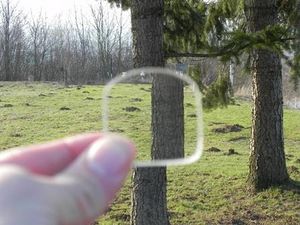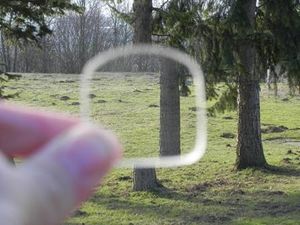Wedge prism
From AWF-Wiki
(Difference between revisions)
(→Handling) |
|||
| Line 10: | Line 10: | ||
# Move around the prism counting the trees included in the sample till starting point is reached. | # Move around the prism counting the trees included in the sample till starting point is reached. | ||
| − | <gallery | + | <gallery widths=300px heights=300px> |
file:wedge_prism1.jpg|Tree is included in the sample | file:wedge_prism1.jpg|Tree is included in the sample | ||
file:wedge_prism2.jpg|Tree is not included in the sample | file:wedge_prism2.jpg|Tree is not included in the sample | ||
Revision as of 19:48, 4 July 2012
| sorry: |
This section is still under construction! This article was last modified on 07/4/2012. If you have comments please use the Discussion page or contribute to the article! |
Contents |
General description
The wedge prism is a small honed glass plate that is used to make an angle count sample. You can estimate basal area factors of ½, 1, 2 or 4. The observer can do an angle count sample while he moves around the prism – and the prism is still located at the centre point of the plot.
Handling
- Select the point for angle count sample.
- Select starting point (tree) for the sample.
- Move around the prism counting the trees included in the sample till starting point is reached.
| Advantages | Disadvantages |
|---|---|
| independence of power sources (no batteries needed) | no digital storage of measurement results available. |

